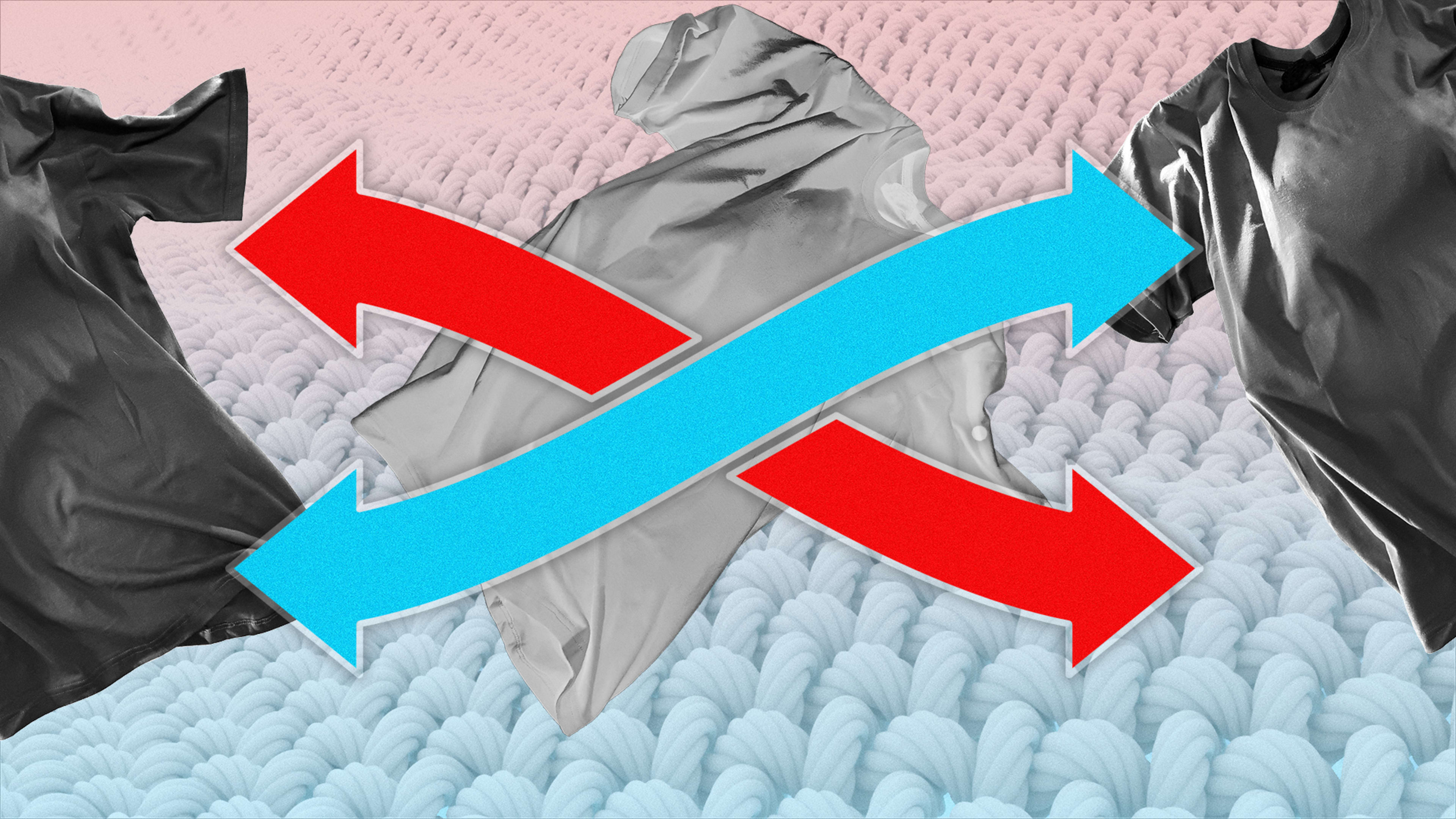May is a tough month to get dressed. In many parts of the country, you don’t know if you need a sweatshirt or a T-shirt, whether you’ll be shivering or sweating. It’s a problem made only worse by climate change, as weather patterns are becoming more extreme and unpredictable.
A team of Chinese researchers who just published findings in Nano Letters may have found a solution. They’ve developed a remarkable new fabric dubbed Janus, and they demonstrated it working inside a T-shirt. Flipped one way, Janus reflects the heat of the sun and keeps you 11 degrees cooler than a typical white cotton shirt. Flipped the other way, it traps warming solar radiation against your skin and keeps you 14 degrees warmer than a black cotton shirt.
All in all, this fabric offers about a 25-degree difference in how you feel just by the way you wear it. Oh, and did I mention that it can generate power, too?

How can this possibly work?
The shirt is made of layers of polymer and cotton fibers, engineered with special structures and coatings. The sandwich structure is asymmetrical by design, so that it can be flipped into warm and cool modes.
On the warm side, the material is covered in zinc and copper nanoparticles, which absorb solar energy. There’s a term for that type of mechanism, which is appropriately called a solar absorber. It’s basically a solar panel, but instead of turning sunlight into electricity, it turns sunlight into heat. This warm side even works at night, albeit to a lesser degree, when it can warm your skin by 5 degrees.
On the cool side, the fabric is covered with an extremely thin layer of aluminum. This surface still looks like fabric, but the aluminum reflects light like a mirror, so all that solar energy that would stick around as heat bounces right off your shirt. This layer is also porous, allowing steam to evaporate.
Finally, the researchers demonstrated that the shirt can actually harness power. By embedding a thermoelectric generator (a generator that harvests energy from temperature differences) inside the Janus fabric, it can produce electricity, thanks to the difference in temperature between the hot and cold sides. It’s less than a watt of power. But it’s still a meaningful amount of energy that scientists imagine could power all sorts of small sensors.
More practical than you think
Janus is more than a neat technical concept. The researchers demonstrated that it could be practical to bring to market, too. The fabric is economical to produce, the researchers write. And it can even go into the washing machine (Janus loses a bit of its cooling efficiency after five washes, but so little that its wearer wouldn’t notice).
Given that the world is only getting warmer, the researchers conclude that wearing high-tech fabrics like Janus could save us considerable greenhouse emissions from heating and cooling while making outdoor environments more conducive to life and work. All I know is, with another sweltering summer around the bend, I could use a case of Degree Clinical and a Janus shirt, stat.
Recognize your brand’s excellence by applying to this year’s Brands That Matter Awards before the final deadline, June 7.
Sign up for Brands That Matter notifications here.
